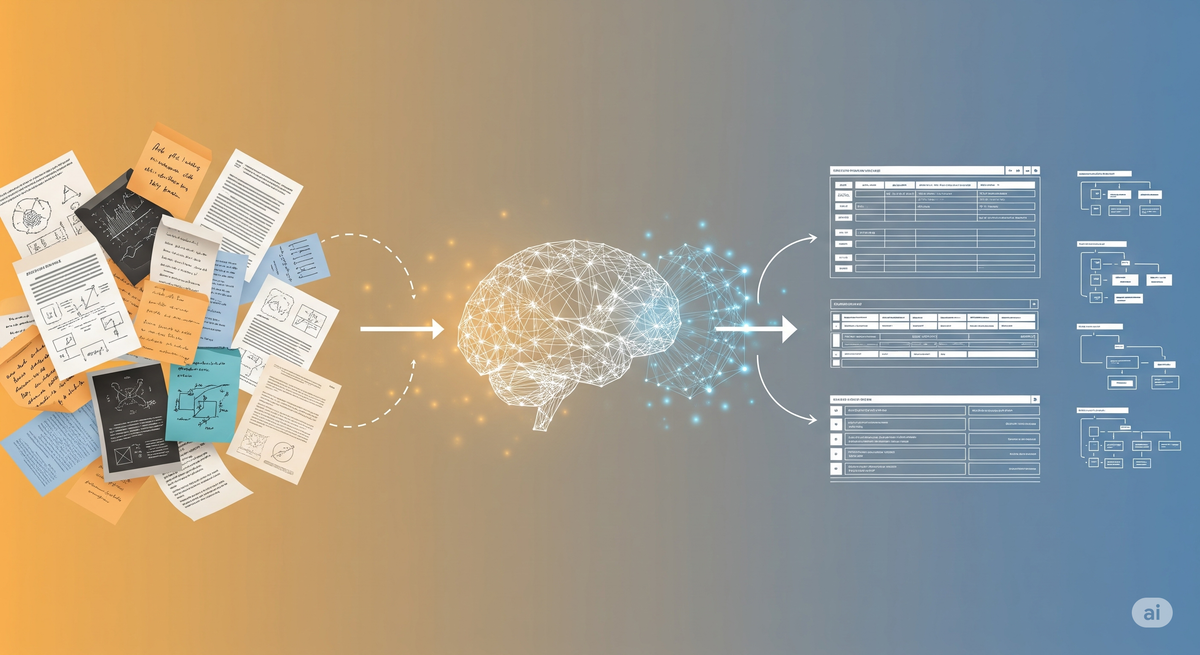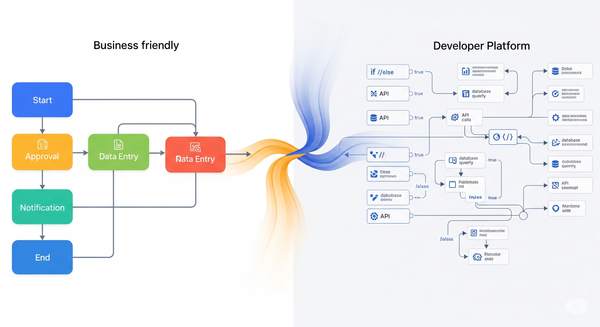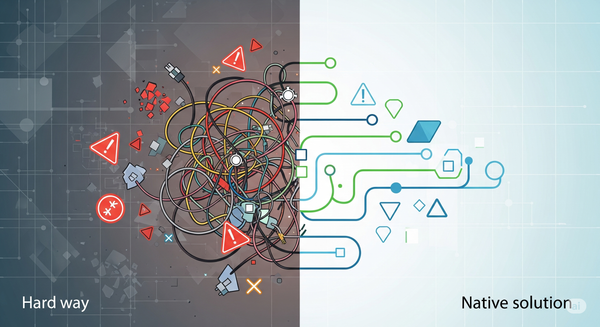AI-Powered Schema Discovery with LangExtract
Can AI automatically discover what data to extract from unstructured text? Project Aperio demonstrates schema-free extraction using Google's LangExtract across medical and scientific documents, eliminating manual configuration while maintaining domain-specific intelligence.

I recently completed Project Aperio, an interactive demonstration of Google's LangExtract library that showcases automated schema discovery for structured data extraction. The project explores a compelling question: can AI eliminate the tedious manual work of defining extraction schemas by automatically discovering what should be extracted from unstructured text?
The Challenge of Extracting Structure from Unstructured Text
Traditional data extraction workflows face a fundamental challenge: transforming unstructured text into structured data requires extensive manual schema definition. When working with free-form documents like medical transcriptions, research papers, or legal contracts, analysts must first read through samples to understand what information exists, then manually define extraction patterns for each entity type.
This process demands both domain expertise and significant time investment. A healthcare analyst processing clinical notes must identify patterns for patient demographics, medication references, diagnostic codes, and treatment plans - then translate this understanding into formal extraction rules. The same analyst switching to scientific literature would need to restart this entire process, learning to recognize research methodologies, performance metrics, and experimental results.
LangExtract addresses this bottleneck by automatically discovering extraction schemas from unstructured text samples. Instead of manually analyzing documents and writing configuration files, users provide raw text and describe their analytical goals in natural language. The system examines the unstructured content and suggests what structured data fields should be extracted.
Technical Implementation: From Text to Structure
The demonstration follows a systematic 3-phase process to transform unstructured text into structured extraction schemas:
Phase 1: Input Validation: Initial testing confirms LangExtract can process the unstructured text samples and establish reliable API connectivity. This phase validates that the raw text is suitable for automated analysis.
Phase 2: Text Analysis: LangExtract examines unstructured text samples and automatically discovers extraction schemas based on natural language goal descriptions. For medical transcriptions, the prompt "extract patient information, clinical findings, and treatment details for healthcare analytics" yields five structured categories. For scientific abstracts, "extract key research components, methodologies, and findings for academic trend analysis" produces different structured categories focused on research elements.
Phase 3: Schema Verification/Validation: The discovered schemas undergo testing against additional text samples from the same domain to verify consistency and reliability of the extraction patterns.
Hypothesis Testing: Domain Independence
The project tests a specific hypothesis: schemas discovered from different text domains should be independent, reflecting the distinct information structures inherent to each field. Using medical and scientific text as test cases, the analysis evaluates whether LangExtract maintains domain separation or produces overlapping extraction patterns.
Cross-Domain Schema Comparison: The cross-domain comparison confirms the independence hypothesis. Medical text analysis yielded schemas focused on patient care workflows (demographics, conditions, medications), while scientific text produced research-oriented patterns (methods, datasets, performance metrics). Zero schema overlap between domains validates that LangExtract maintains distinct structural interpretations based on text characteristics rather than applying generic extraction patterns across different content types.
This domain independence is critical for practical applications where users need extraction schemas tailored to specific text types and goals of their projects.
The analysis compares how LangExtract imposes different structural interpretations on different types of unstructured text, demonstrating adaptive pattern recognition based on content characteristics.
Key Findings: Automated Structure Discovery
The results validate that LangExtract can successfully identify meaningful structure within unstructured text without manual configuration. Medical transcriptions yielded schemas focused on patient care workflows, while scientific abstracts produced research-oriented extraction patterns. This demonstrates the system's ability to recognize domain-specific structures embedded in free-form text.
The transformation from unstructured input to structured output depends significantly on prompt clarity and example quality. Vague descriptions of analytical goals produce generic extraction patterns, while specific prompts generate schemas that capture domain-relevant structures hidden in the unstructured text.
Technical Challenges and Solutions
Several implementation details required attention:
Warning Management: Matplotlib font warnings cluttered the notebook output when rendering network graphs with emoji characters. Rather than suppressing all warnings globally, I used targeted HTML post-processing to remove specific stderr output divs, preserving important development warnings while cleaning the presentation.
Visualization Strategy: Creating meaningful network graphs from extracted entities required careful consideration of node positioning and relationship inference. The final approach uses category-based clustering with NetworkX, showing entities grouped by extraction class with connections suggesting potential relationships.
Deployment Architecture: The dual-page GitHub Pages deployment provides both a standard index page for general audiences and complete technical documentation for developers. The index.html presents key results and value proposition, while notebook.html contains the full implementation details.
Limitations and Scope
The demonstration uses embedded text samples rather than full datasets, limiting insights about extraction performance at scale. This design choice prioritizes demonstration clarity and setup simplicity over comprehensive evaluation. The approach proves LangExtract's schema discovery concept but doesn't validate production-scale performance or consistency across large, diverse text collections. This is clearly a possible future enhancement for the project.
The network visualizations are static rather than interactive, reducing exploratory capability. While adequate for demonstration purposes, interactive graphs would better showcase the relationships between extracted entities. Another future enhancement for the project.
Processing costs present another consideration. Each LangExtract API call consumes quota, making extensive experimentation expensive. The current approach balances demonstration completeness with practical resource constraints.
Educational Impact
The project serves multiple educational purposes. Developers can understand LangExtract's capabilities through hands-on code examples. The cross-domain analysis demonstrates practical adaptability, while the complete workflow shows integration patterns for real applications.
The notebook structure supports iterative exploration. Developers can modify prompts, adjust examples, or test different text samples to understand how LangExtract responds to various inputs. This experimentation capability transforms the demonstration into an active learning tool.
Practical Implications
Project Aperio suggests significant potential for reducing data extraction setup overhead. The ability to automatically discover extraction schemas could accelerate analysis workflows, particularly when working with unfamiliar text types or when domain expertise is limited.
However, the results also highlight the continued importance of human guidance. While LangExtract eliminates manual schema writing, it requires thoughtful prompt engineering and example selection. The human role shifts from detailed pattern specification to high-level goal articulation and result validation.
Repository and Access
The complete implementation is available at github.com/knightsri/aperio with live demonstrations at knightsri.github.io/aperio. The repository includes setup instructions, dependency specifications, and example environment configuration for reproducible results.
Project Aperio demonstrates that AI-powered schema discovery represents a meaningful advancement in data extraction workflows. While not eliminating human involvement, it substantially reduces manual configuration overhead and enables rapid adaptation to new text types. The approach shows particular promise for exploratory analysis and multi-domain extraction scenarios where traditional schema-based approaches become unwieldy.



